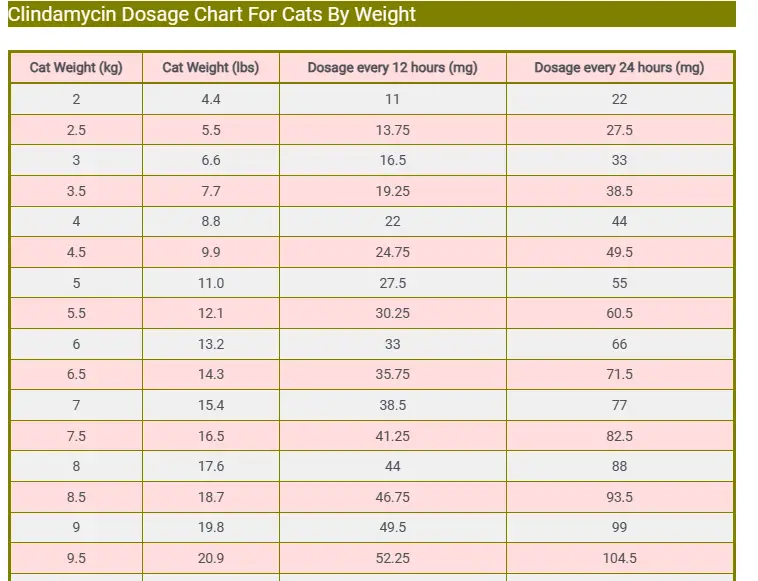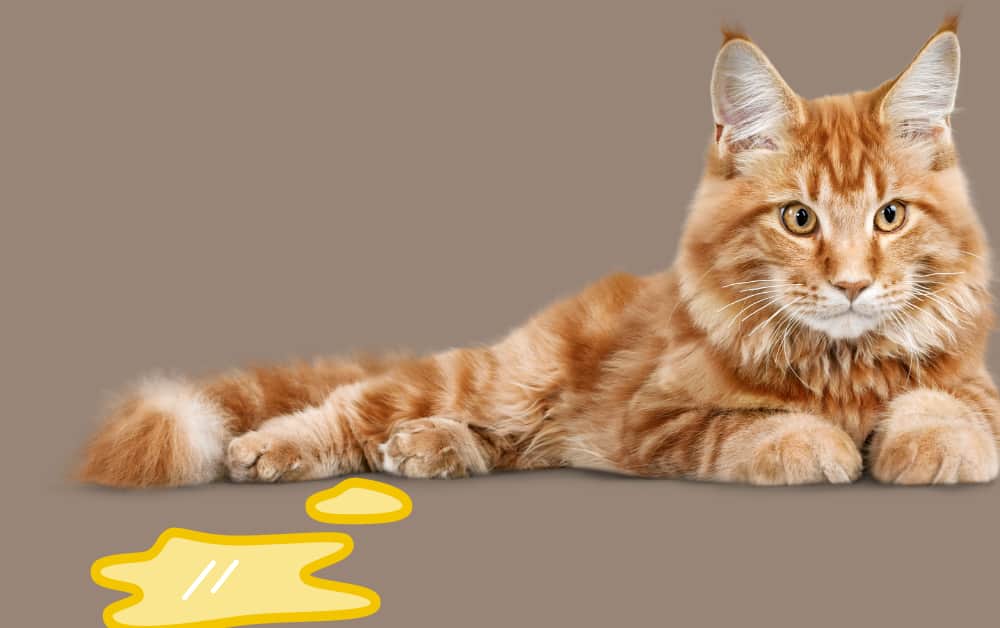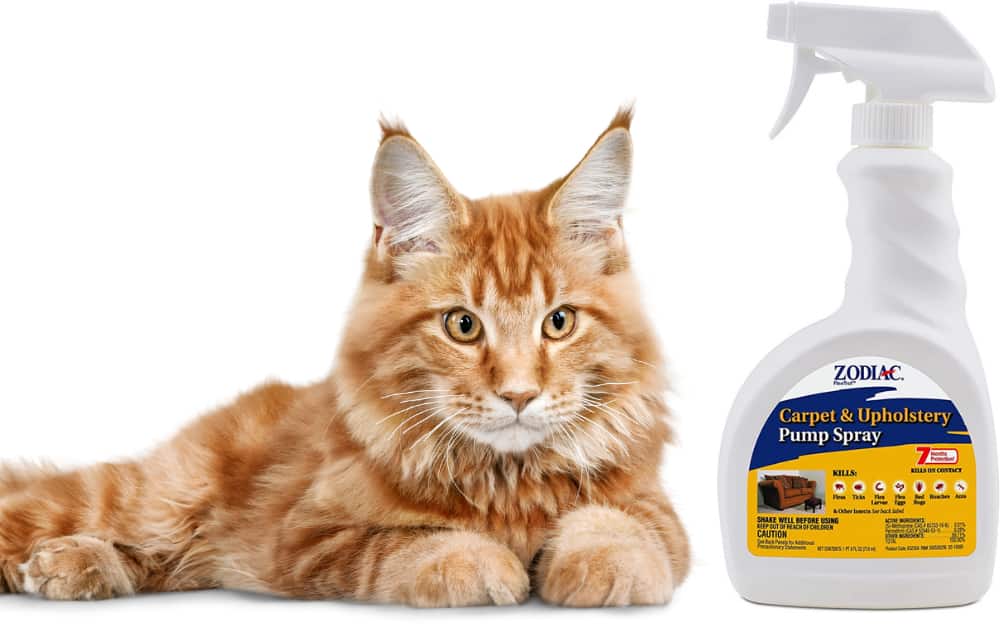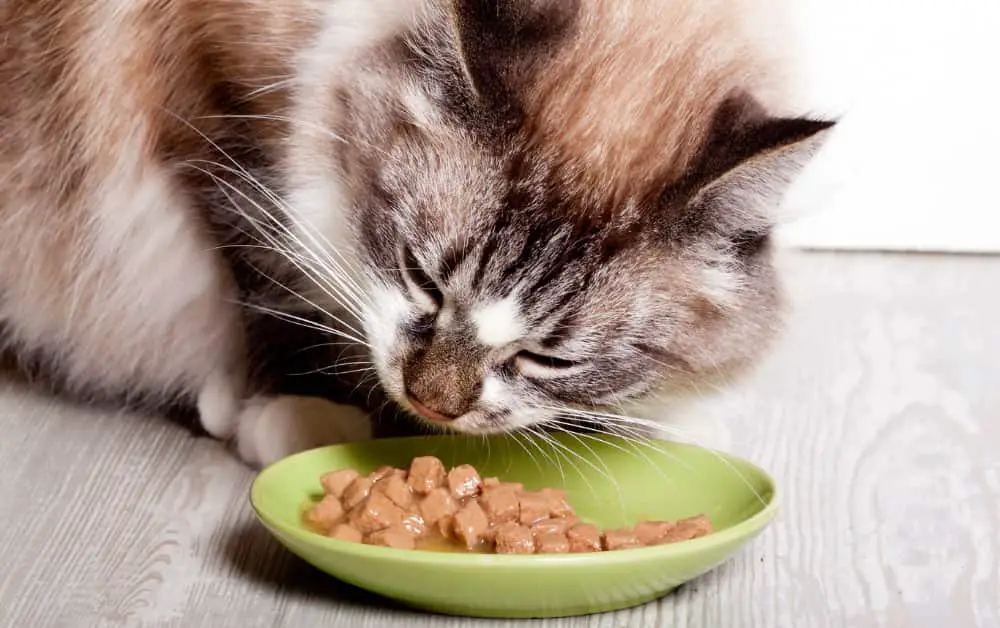The ideal dosage of Clindamycin for cats to treat infected wounds, abscesses, and dental infections is 5.5 mg per kilogram (2.5 mg per pound) every 12 hours, or 11 mg per kilogram (5 mg per pound) every 24 hours orally. However, for felines, the dosage for treating other health conditions can vary depending on your pet’s health condition and the severity of the illness.
Clindamycin Dosage For Cats
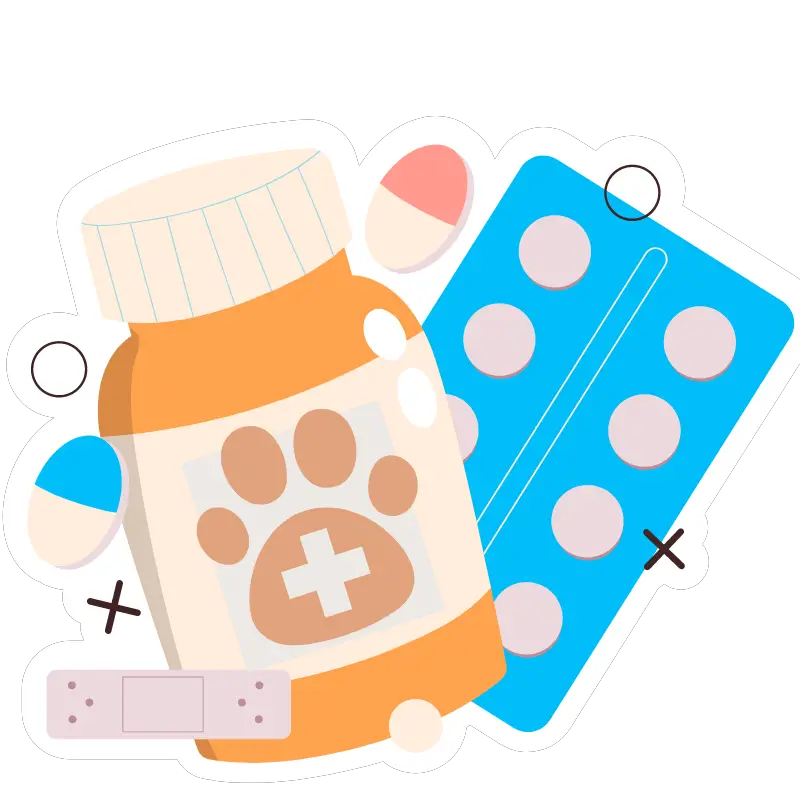
- Ideal Dose: 5.5 mg/kg (2.5 mg/lb) every 12 hours.
- Uses: Infected wounds, abscesses, and dental infections.
- FDA Approved: Yes
- Brand Names: Antirobe®, Cleocin®.
- Variants: Capsule
- Storage & Handling: Room Temperature.
- Administration: Every 12 or 24hours.
Disclaimer: Self-medication can be hazardous. Please consult your veterinarian for personalized guidance on the appropriate dosage for your feline friend specific condition.
As devoted pet owners, ensuring the health and well-being of our feline companions is paramount. Yet, when it comes to administering medications, especially antibiotics like clindamycin, there can be understandable concerns about dosage, efficacy, and potential side effects.
In this comprehensive guide, we delve into the intricacies of clindamycin dosage for cats, providing invaluable insights and expert recommendations to help you navigate your pet’s treatment journey with confidence and care.
Whether you’re a seasoned cat parent or facing this challenge for the first time, this article aims to equip you with the knowledge and understanding necessary to make informed decisions regarding your furry friend’s health.
Clindamycin Dosage For Cats
The typical dosage of clindamycin for cats is 5.5 mg per kilogram (2.5 mg per pound) every 12 hours, or 11 mg per kilogram (5 mg per pound) every 24 hours orally. However, dosages may vary depending on the specific condition being treated and the veterinarian’s recommendation. Always follow your vet’s instructions precisely when administering medication to your cat.
Clindamycin Dosage Chart For Cats By Weight
| Cat Weight (kg) | Cat Weight (lbs) | Dosage every 12 hours (mg) | Dosage every 24 hours (mg) |
|---|---|---|---|
| 2 | 4.4 | 11 | 22 |
| 2.5 | 5.5 | 13.75 | 27.5 |
| 3 | 6.6 | 16.5 | 33 |
| 3.5 | 7.7 | 19.25 | 38.5 |
| 4 | 8.8 | 22 | 44 |
| 4.5 | 9.9 | 24.75 | 49.5 |
| 5 | 11.0 | 27.5 | 55 |
| 5.5 | 12.1 | 30.25 | 60.5 |
| 6 | 13.2 | 33 | 66 |
| 6.5 | 14.3 | 35.75 | 71.5 |
| 7 | 15.4 | 38.5 | 77 |
| 7.5 | 16.5 | 41.25 | 82.5 |
| 8 | 17.6 | 44 | 88 |
| 8.5 | 18.7 | 46.75 | 93.5 |
| 9 | 19.8 | 49.5 | 99 |
| 9.5 | 20.9 | 52.25 | 104.5 |
| 10 | 22.0 | 55 | 110 |
The above Antirobe®, Cleocin® Clindamycin dosage chart for cats by weight is provided for educational purposes only and should not substitute for veterinary advice. Always start with the minimum dose for you feline until your vet prescribes an increase in dosage.
Related Post: Miralax Dosage For Cats
Clindamycin Uses in Cats
- Treats skin infections such as pyoderma and wounds
- Manages dental infections like gingivitis and periodontal disease
- Addresses abscesses resulting from bites or scratches
- Effective against soft tissue infections
- May be prescribed for respiratory infections
- Used prophylactically after dental procedures or tooth extractions
Related Post: Apoquel Dosage For Cats
Clindamycin Side Effects in Cats
- Gastrointestinal upset: vomiting, diarrhea, decreased appetite
- Esophageal irritation: difficulty swallowing, discomfort
- Liver toxicity: jaundice, lethargy, loss of appetite
- Allergic reactions: skin rashes, itching, swelling, difficulty breathing
- Clostridium difficile infection: diarrhea, colitis
- Sensitivity reactions: adverse effects in cats sensitive to Clindamycin or related antibiotics
Which Cats Should Not Take Clindamycin.
Felines with the following health issues should not take Clindamycin Antirobe®, Cleocin® without veterinary recommendations.
- Cats with known allergies to Clindamycin or related antibiotics
- Cats with a history of severe gastrointestinal issues like IBD or colitis
- Felines with pre-existing liver disease or impaired liver function
- Cats with kidney disease, requiring dosage adjustments or monitoring
- Pregnant or nursing cats, unless advised by a veterinarian
- Cats taking medications that may interact with Clindamycin
FAQs
Can I give my cat clindamycin without a prescription?
It is not safe or legal to administer clindamycin or any other prescription medication to a cat without a veterinarian’s approval and prescription.
How long does it take for clindamycin to work in cats?
The effectiveness of clindamycin can vary depending on the type and severity of the infection, but most cats will show improvement within a few days of starting treatment.
What should I do if my cat vomits after taking clindamycin?
If your cat vomits shortly after taking clindamycin, contact your veterinarian for further guidance. They may recommend adjusting the dosage or administering an anti-nausea medication.
Are there any alternatives to Prednisone for cats?
Yes, there are alternative medications and treatment modalities available for managing various feline health conditions. Your veterinarian can guide alternative options based on your cat’s needs and medical history.
Can clindamycin be used to treat viral infections in cats?
No, clindamycin is an antibiotic medication used specifically to treat bacterial infections and is not effective against viral infections.
Are there any natural alternatives to clindamycin for treating bacterial infections in cats?
While there are some natural remedies that may support the immune system and aid in recovery from infections, they are not a substitute for appropriate antibiotic treatment prescribed by a veterinarian.
